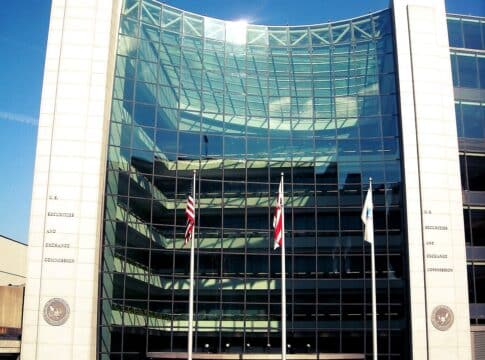A Deep Dive into SEC’s Proposed Climate Disclosure Rule for Sustainability
The Securities and Exchange Commission (SEC) has introduced a transformative climate disclosure rule aimed at revolutionizing the reporting landscape for public companies.
This proposed rule seeks to mandate detailed disclosure of emissions, climate risks, and strategies for achieving net zero emissions, marking a significant leap towards corporate transparency and sustainability.
Key Aspects of the Proposed Rule
At the core of the SEC’s proposed rule lies a call for comprehensive reporting, compelling companies to provide detailed insights into their climate-related facets. This includes the delineation of risks associated with climate impact, emissions data, and robust plans for achieving net zero emissions.
One of the primary objectives of the SEC’s proposal is to arm investors with consistent, comparable, and meaningful climate-related information. This will enable investors to make more informed decisions, considering a company’s environmental impact and climate risk profile in their investment strategies.
Moreover, standardizing reporting obligations across companies issuing securities is another key aspect of the proposal. This seeks to establish uniformity in disclosures, potentially reducing discrepancies and enhancing the overall quality of information provided by companies.
Most notably, SEC’s proposed rule will significantly impact the practices of accounting, auditing, and assurance for public companies and their service providers. It involves adapting existing frameworks to accommodate the new reporting requirements.
It may also call for developing new methods and standards for evaluating and reporting climate-related information.
Overall, the proposed climate disclosure rule cover two major aspects:
Climate-Related Financial Impacts: The regulation tackles how climate-related impacts should be included in financial statements (e.g. balance sheet, income statement, cash flow).
Narrative Disclosures: The rule also involves narrative disclosures in form SK. It will likely include discussions on risks, business strategy impacts, and metrics like greenhouse gas inventory.
Implications and Challenges for Companies
The SEC’s disclosure rule also poses a number of implications and challenges.
The first one is increased reporting obligations for companies. They will face additional reporting demands that may require thorough data gathering, accurate presentation, and strengthened internal controls to comply with the new regulations.
RELATED: SEC New Climate Disclosure Rule Turns into a Battleground
Companies also have to go along the transition from voluntary to regulated disclosure. This represents a significant change, requiring gradual efforts until they become accustomed to the new reporting requirements.
However, for companies that are already complying with similar disclosure rules, it would be easier for them to embrace the proposed changes. Given the overlap with other existing regulations, determining the costs of the SEC’s rule alone would be hard.
But according to the SEC, the required reporting will cost a small publicly listed firm about $420,000 a year on average. For a larger company, it will be $530,000 a year.
Source: U.S. SEC
Role of Carbon Credits and RECs
The SEC’s proposed rule acknowledges the relevance of carbon offsets and renewable energy credits (RECs), underlining their importance in climate-related reporting. Companies increasingly leverage these instruments for decarbonization, establishing market-based mechanisms to advance sustainability goals.
However, discussions have emerged regarding the adequacy of the SEC’s requirements, raising concerns about the need for more comprehensive disclosures. It’s crucial for investors and stakeholders to understand how the use of these credits impacts a company’s risk profile, business strategy, and long-term financial implications.
In particular, the proposed rule outlines the following key areas for disclosure:
Climate-Related Risk: Companies’ use of voluntary carbon markets in their transition risk strategy.
Business Strategy Alignment: How the use of carbon credits or offsets aligns with a company’s business model, strategy, and future outlook.
Targets and Goal Disclosure: Requirements for companies to disclose if their sustainability targets involve the utilization of RECs and offsets.
While the proposed rule has been in existence for about 18 months, awaiting finalization, stakeholders have actively engaged in the process, submitting over 20,000 comments during a consultation period.
However, the final timeline for its completion remains uncertain, leaving companies in a state of anticipation regarding the impending changes.
How to Prepare for SEC’s Proposed Climate Disclosure Rule: A Roadmap for Companies
Despite the uncertain timeline, companies are advised to prepare by focusing on “no regret” actions, according to Matt Handford, Principal, Climate Change and Sustainability at Ernst & Young. He further shared insights on how companies can better prepare for the new disclosure requirements.
Key areas to focus on per Handford’s advice include the following:
Emissions Understanding and Accounting:
Companies need to treat emissions data with the same rigor as financial data, ensuring completeness, accuracy, and reasonableness of their emissions inventory.
Data Hygiene and Quality Assurance:
Emphasis should be on the quality of data and the reliability of sources, underpinning robust documentation and validation processes.
Reassessment of Climate-Related Claims:
Companies are reassessing their public claims related to carbon neutrality and net zero targets, ensuring robust strategies and execution plans to meet these objectives.
Engaging Internal Stakeholders:
Collaboration across various internal departments, including finance and legal, is pivotal to comprehensively address climate-related disclosures and strategies.
The SEC’s proposed climate disclosure rule represents a transformative era in corporate reporting, mandating transparency and accountability regarding climate-related information. As businesses gear up for these regulatory changes, thorough preparation and collaborative approach will be crucial in meeting the evolving disclosure obligations and steering towards a more sustainable future.
The post A Deep Dive into SEC’s Proposed Climate Disclosure Rule for Sustainability appeared first on Carbon Credits.



